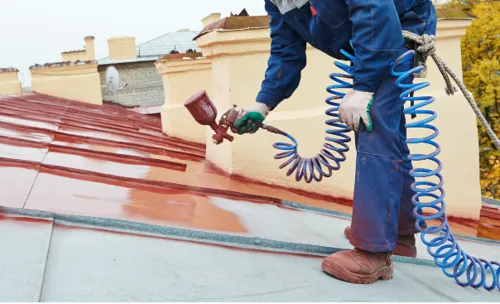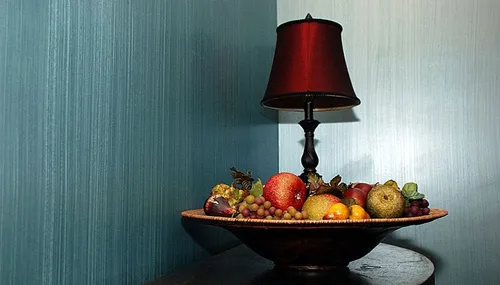Knowing how to prepare your home for painting will not only save you a lot of time and money it will also ensure your project goes as smoothly as possible. We'll go over the steps you can take to prepare your home for a painting project.
7 Steps to prepare your home for interior painting
1. Remove all soft furnishings
The first step in your lead-up to a painting project should be removing all your soft furnishings. These could be carpets, rugs, drapes, or curtains. Leaving curtains hanging on the rails or mats lying around will only slow down the work and expose them to damage.
Remove as much as you can, then ensure whatever you can't remove is covered and sealed off properly to avoid paint dripping onto it. If you want, you can tape sheets of paper over your windows to maintain your privacy.
2. Move and cover your furniture
Next, you should move and cover all your furniture. Move all your furniture to the centre of the room and cover it with a tarp or cloth. You could transfer your furniture to another room or a storage facility if you'd like, but packing it nicely in the centre of the room should be enough in most cases.
Moving furniture out of the way is vital because it will create room for you or the contractor to work, and it will also prevent anything from getting spoiled.
3. Secure your electronics and appliances
Once you've covered all your furniture, you should then move all your electronics and appliances out of the way.
If you're not having your entire home painted, moving your electronics to a different room might be the best thing to do. You could leave them in the same room but make sure they won't get in the way or get damaged.
4. Take down art, photos, and ornaments
Removing your art and picture frames is another priority you should pay attention to preparing for a painting project. You don’t want your precious artworks or photos getting damaged, so be sure to wrap them up properly and pack them away in a safe place. Clocks, photos, mirrors, and painting are all very delicate items, so you should be extra careful when handling them.
You can leave the hooks in the wall if you know they will go back to the same place.

5. Cover immovables
There are some things you will find you won't be able to move as you prepare your home. Things like light fixtures, sockets, and switches will all need to be covered and sealed up. You can use tape and plastic to seal off anything you can't move.
6. Prepare your walls
Preparing your walls for a fresh coat of paint is a vital part of getting your home ready to be painted. If you don't clean your walls before painting, the new paint will get applied on top of all the dust and dirt, creating permanent marks on the walls. That will affect the quality of your paint job.
Cleaning off stains and getting rid of dust might seem like a needless task, but it will significantly impact the result.
7. Prepare a temporary living arrangement
The last step in your preparation for your home getting painted will be arranging a temporary living space. You might need to move out entirely or go for a bit without using the rooms getting painted. The arrangement you make will depend on whether you're getting your whole house painted or just a section of it.
Leaving the space will allow the work to go on uninterrupted, and it will prevent accidents, as well as limit your exposure to paint fumes.
You shouldn't underestimate the importance of preparing your house for getting painted. If you choose to have a DIY project, proper preparation will save you time and make the project go as smoothly as possible. If you hire a painting contractor preparing beforehand will more than likely reduce your cost. All in all, taking the time to prepare will help you protect your valuables, allow you to enjoy the process, and give you peace of mind throughout the project.






